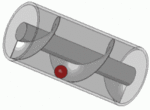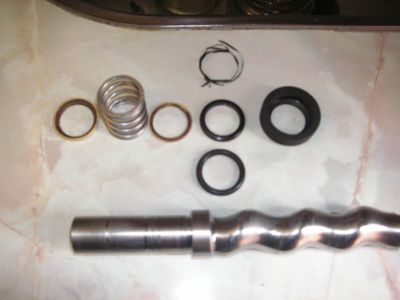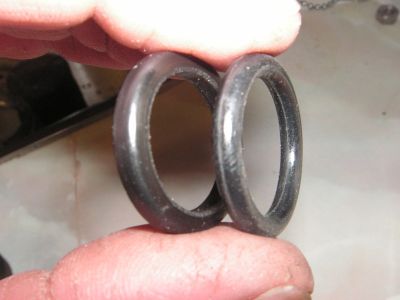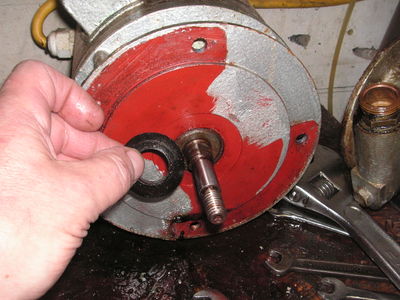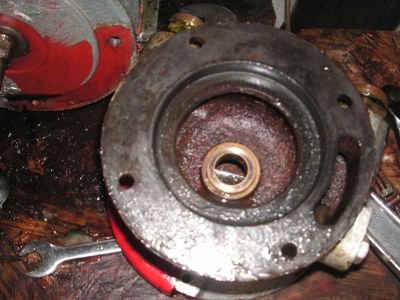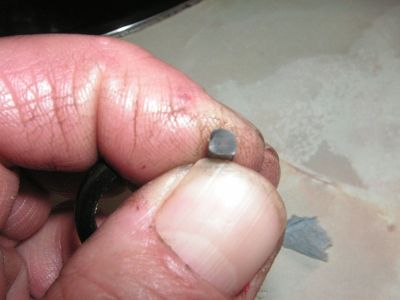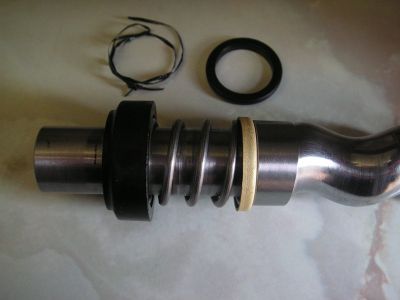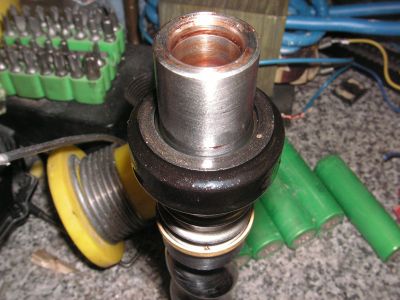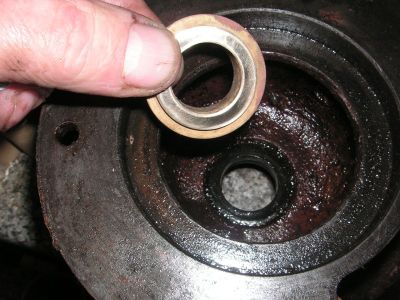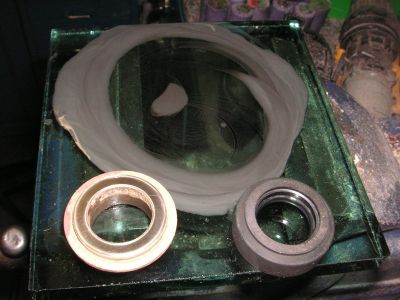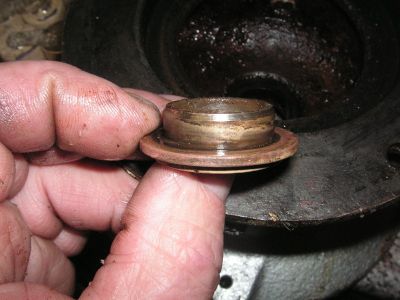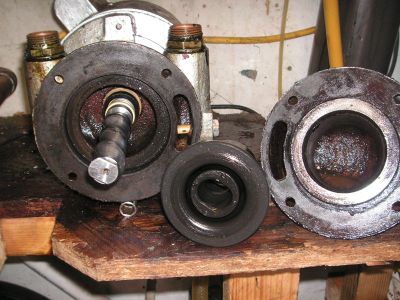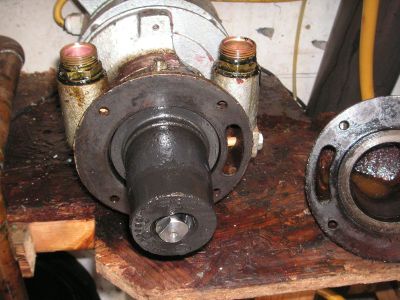Difference between revisions of "Pump - Mono MS"
| Line 61: | Line 61: | ||
File:Mono ms7 assembled seal.JPG|The seal assembled on the stator. The O ring within the black ceramic disk can slide along the shaft, obviating the need for bellows. In the background is the old O ring and the fabric causing the leak. | File:Mono ms7 assembled seal.JPG|The seal assembled on the stator. The O ring within the black ceramic disk can slide along the shaft, obviating the need for bellows. In the background is the old O ring and the fabric causing the leak. | ||
File:Mono ms10 damaged ceramic.jpg|Score marks on the seal face was most likely caused by this bit of swarf embedded in the rotating half of the seal. | File:Mono ms10 damaged ceramic.jpg|Score marks on the seal face was most likely caused by this bit of swarf embedded in the rotating half of the seal. | ||
| − | |||
File:Mono ms11 seal fixed half location.jpg|The brass, stationary half of the seal is an easy push fit into a rubber bush mounted in the pump body. | File:Mono ms11 seal fixed half location.jpg|The brass, stationary half of the seal is an easy push fit into a rubber bush mounted in the pump body. | ||
| − | + | File:Mono ms12 lapped seal.jpg|Both faces of the seal were gently sanded flat using 800 grit wet and dry paper, backed by plate glass and lubricated with a little water and washing up liquid. They were then lapped for a long period direct on the plate glass using T-Cut. The rotating half of the seal is made from a graphite type material and the static half from a soft brass making both pieces easy to reface. | |
| − | File:Mono ms12 lapped seal.jpg|Both faces of the seal were gently sanded flat using 800 grit wet and dry paper, backed by plate glass and lubricated with a little water and washing up liquid. | + | File:Mono ms13 seal fixed half chamfer.jpg|Reassembly was made easer by turning a small chamfer on the spigot of the static half of the seal, to help it enter its rubber housing (in the absence of a lathe the chamfer could easily be filed with a little care). |
| − | |||
| − | File:Mono ms13 seal fixed half chamfer.jpg| | ||
File:Mono ms8 part assembled pump.JPG|Pump during reassembly. It's important to note that the stator is screwed onto the motor shaft with a left hand thread. Flats are provided on the motor shaft and on the end of the rotor to allow the use of spanners. | File:Mono ms8 part assembled pump.JPG|Pump during reassembly. It's important to note that the stator is screwed onto the motor shaft with a left hand thread. Flats are provided on the motor shaft and on the end of the rotor to allow the use of spanners. | ||
File:Mono ms9 part assembled pump with stator.JPG|Stator in place on the rotor, ready for the final fitting of the pump end cover. | File:Mono ms9 part assembled pump with stator.JPG|Stator in place on the rotor, ready for the final fitting of the pump end cover. | ||
Revision as of 19:41, 24 May 2013
Mono have been manufacturing pumps since 1935. The design is what's known as a progressive cavity pump, being a single helix rotor operating within a twin helix stator. In very simplistic terms it can be thought of as being similar to an Archimedean spiral pump.
The MS pump has been in manufacture for at least 40 years and spare parts are still available. New these pumps retail at several hundred pounds but, although they don't appear frequently, they can be found second hand at reasonable prices on on-line auction sites.
The design is self priming and can be considered as a positive displacement pump. It is capable of pumping a large range of media including slurries and small entrained solids, although the latter will obviously induce premature ware. Different stator materials are available and the writer has had a viton stator pumping bio and vegetable oil in an MS pump for nearly five years at the time of writing with no noticeable adverse effects.
The pumps ability to pump viscous liquids makes it ideal for pumping WVO and semi-solid fats.
The Mono MS has the following specifications and performance:
- power(kw) ... 0.18
- Max. head ... 35.6m
- Flow at 1450rpm ... 12.5 L/min @ 0 bar - 5.3 L/min @ 3.5 bar.
- Max. suction head ... 8m (self priming)
- Max operating temperature ... TBA
- Inlet/Outlet connections … ¾” BSP, female
- Body material ... cast iron
- Rotor material ... stainless steel
- Stator material ... synthetic nitrile rubber (standard) but others available including viton.
- Weight ... 16kg (including motor)
Mono MS mechanical seal rebuild
The writers MS pump was found leaking so was dismantled. The problem was found to be a piece of landscaping fabric (used as a filter in the system). This seal differed from others in that there are no bellows. The static seal is made by an O ring located in the ceramic disc which seals it to the shaft.
- Mono MS mechanical seal rebuild
Damage was noted as score marks on the seal faces and the profile of the O ring (it was assumed that the item was originally a circular cross section) which had adopted more of a square section. Photo shows a comparison with a new O ring. A 20mm ID and 3.5mm section O ring was found to be a suitable replacement.
Both faces of the seal were gently sanded flat using 800 grit wet and dry paper, backed by plate glass and lubricated with a little water and washing up liquid. They were then lapped for a long period direct on the plate glass using T-Cut. The rotating half of the seal is made from a graphite type material and the static half from a soft brass making both pieces easy to reface.
See also Mono MS instruction manual

